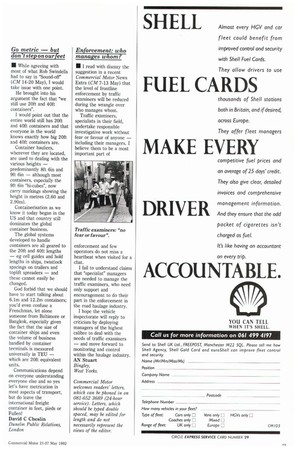Go metric — but don't step on our feet
Page 51

If you've noticed an error in this article please click here to report it so we can fix it.
• While agreeing with most of what Rob Swindells had to say in "Sound-oft" (CM 14-20 May), I would take issue with one point.
He brought into his argument the fact that "we still use 20ft and 40ft containers".
I would point out that the entire world still has 20ft and 40ft containers and that everyone in the world knows exactly how big 20ft and 40ft containers are.
Container hauliers, wherever they are located, are used to dealing with the various heights — predominantly 8ft Gin and 9ft Gin — although most containers, especially the 9ft Gin "hi-cubes", now carry markings showing the height in metres (2.60 and 2.90m).
Containerisation as we know it today began in the US and that country still dominates the global container business.
The global systems developed to handle containers are all geared to the 20ft and 40ft lengths — eg cell guides and hold lengths in ships, twistlock spacings on trailers and toplift spreaders — and these cannot easily be changed.
God forbid that we should have to start talking about 6.1m and 12.2m containers; you'd even confuse a Frenchman, let alone someone from Baltimore or Bangkok, especially given the fact that the size of container ships and even the volume of business handled by container terminals is measured universally in TEU — which are 20ft equivalent units.
Communications depend on everyone understanding everyone else and so yes let's have metrication in most aspects of transport, but do leave the international freight container in feet, pieds or Ful3en!
David C Cheslin
Dunelm Public Relations, London




























































































